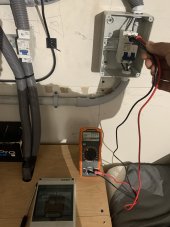Use a proper ‘B’ crimper and you’ll be fine.
(Still don't have proper tool for MC4)
That really surprised me!
Actually, I've never crimped an MC4. I bought a batch of MC3, because someone had cut all the connectors off a lot of panels.
It was from my experience with them that I said, "Make sure pins are correct size for the wire, and boots correct size for insulation.)
All the rest of my MC connections, whether 3 or 4, are either with pre-made extension cables or with pre-made cables I cut in half to make pigtails coming out of boxes. So I'm subject to component and assembly quality of whoever made them. I was working on stuff before it was figured out that MC4 doesn't mate to all MC4 reliably, and UL Listing required tested pairs of brands, and PV panel labels reflected that.
I preferred MC3. Nice machined pins. MC4 looks like the cheapest rolled sheetmetal contacts possible, suitable for Molex connectors inside an appliance. I think quality contacts would be something like hardened and tempered beryllium copper. But even those sometimes aren't manufactured correctly, as figured out from field failures. Contacts have a spec for range (tolerance) of pin sizes they accept, and how much they spring back.
I may yet experience overheated or corroded MC connectors, but hasn't happened so far. Relatively mild weather here. In a place like my mountain property where everything rusts, could be different.
I have ratchet crimper with many other die types, and Harbor Freight hydraulic for larger cables. Need to get a ferrule crimper.
It might have taken a year but after seeing PV production drop I opened up the connectors and all the "mismatched" MC4s (original panel connectors to Bouge RV) had corroded to some extent, some pretty badly.
Maybe dielectric grease between boot and insulation, and mating surface of boots, is the thing to do.
But certainly don't want ferrous contacts, and drop in production must mean severe heating of connectors (or else some strings completely open).




